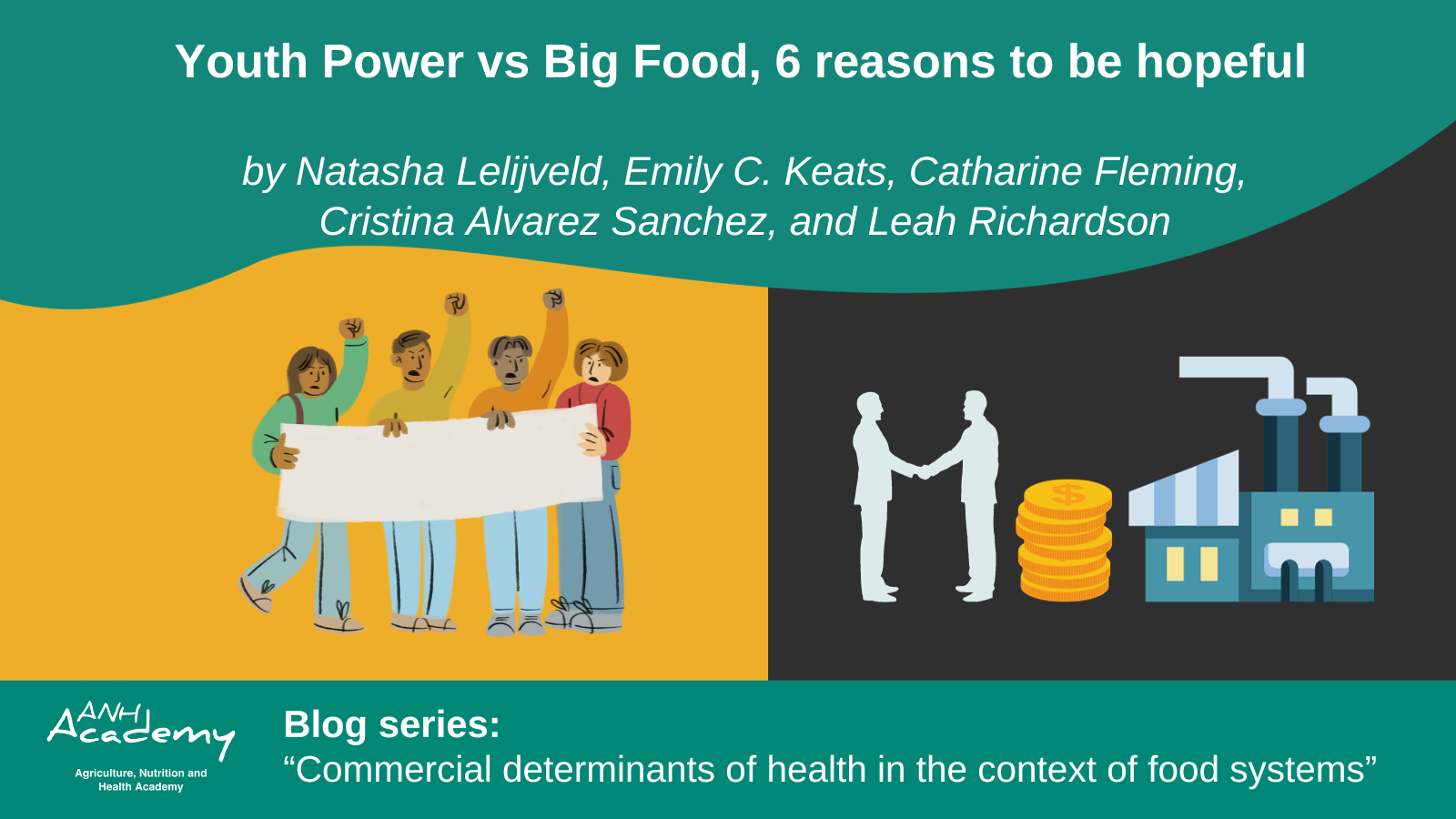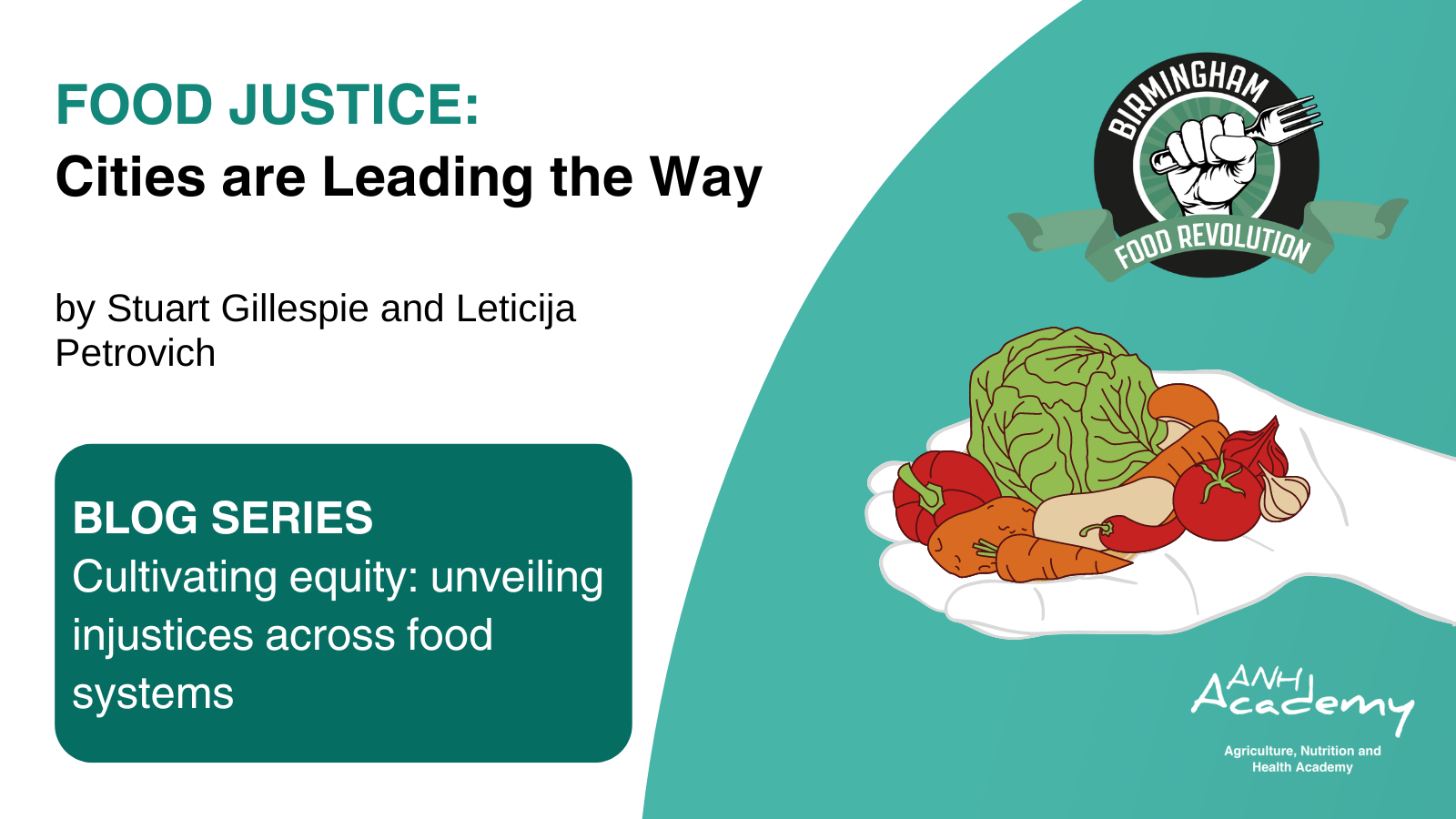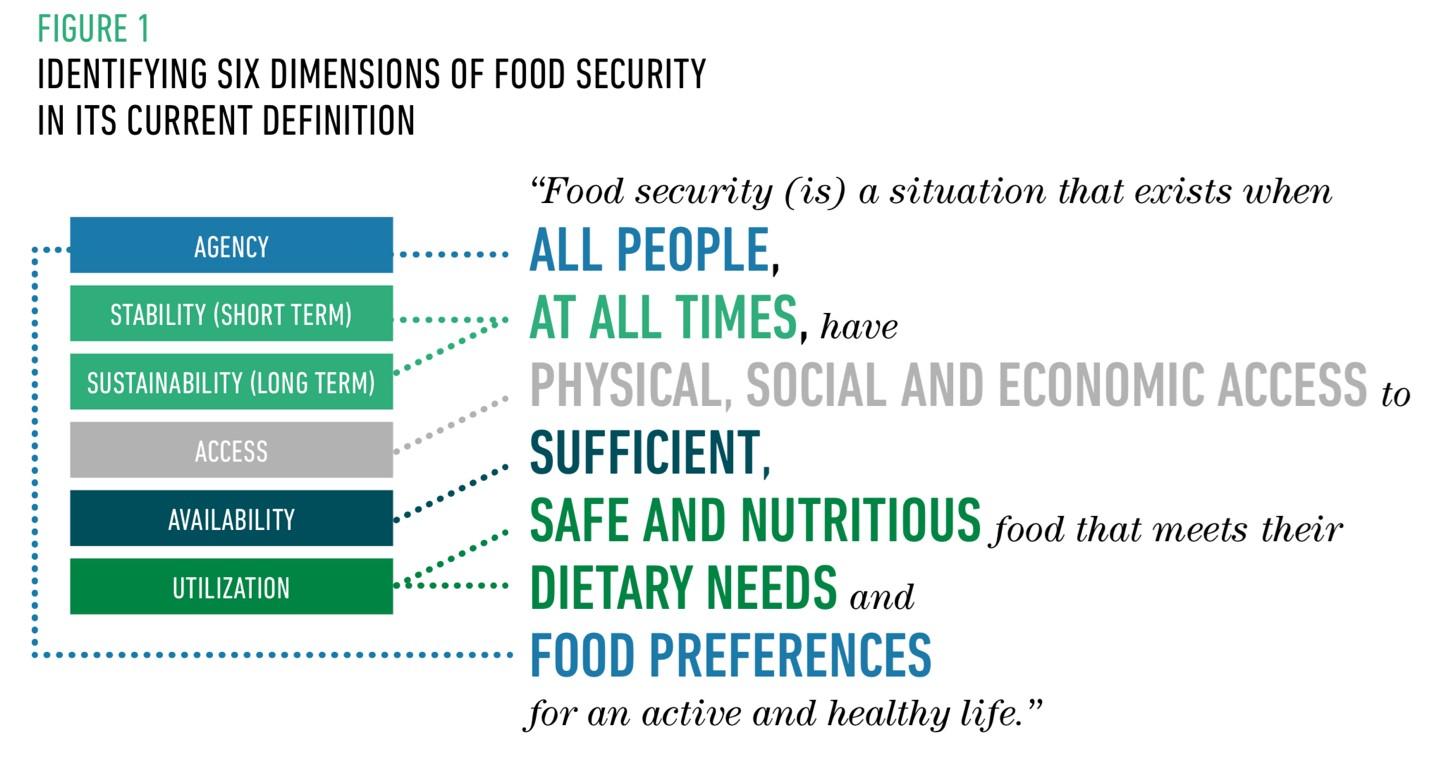
By Natasha Lelijveld, Emily C. Keats, Catharine Fleming, Cristina Alvarez Sanchez, and Leah Richardson
Current food systems are failing young people (defined as roughly 10-24 years for the purpose of this blog). They often overlook their nutritional needs and fail to provide the quantity, frequency, and quality of food they require to grow and develop. Fixing food systems is critical to addressing all forms of malnutrition while having the co-benefit of mitigating climate change. As part of this growing recognition, the Innocenti Framework identified how food systems shape the diets of children and adolescents and formalized the role that all actors have in the sustainable diets of young people, including the role of commercial companies.
While many commercial actors can contribute positively to health and society, a substantial group of them are causing avoidably high levels of ill health, planetary damage, and inequities. This includes large, multinational food companies, aka ‘Big Food’, who contribute to poor health and nutrition through the promotion and sale of unhealthy foods (such as those that are highly processed or high in sugar or salt). Many of these companies lobby in national policy environments, promote globalisation, and drive market economies. While the commercial determinates of health affect everyone, young people are especially at risk.
Today, adolescents make up 1.3 billion of the world’s population, the largest cohort in history. Many low- and middle-income countries (LMICs) currently have a ‘youth bulge’, a large population of adolescents and young people. This should be a demographic gift for national economies, however, the demographic dividend is being exploited by Big Food to make larger profits from the sales of unhealthy foods, at the expense of the nutritional status of young people and planetary health.
While we know that malnutrition is prevalent among adolescents, current data systems are poorly equipped to monitor the nutritional status of this age group. Without the ability to monitor, national governments don’t know the scale of the problem and can’t set targets for improvement.
While we know there are a lot of reasons to be concerned about the negative influences of Big Food on the diets of young people, there are also reasons to be hopeful! Here are six:
1. Young people are empowered by knowledge and food skills.
- When armed with knowledge, especially knowledge on ‘why’, and skills for ‘how-to’, young people make good food choices: research from Ethiopia found that adolescent consumption of sweets and sugar-sweetened beverages was influenced by their awareness of healthy foods. Research from Brazil revealed that the consumption of ultra-processed foods among young people was influenced by their self-efficacy in preparing healthy meals.
- Adolescents are knowledge-seeking and do understand the importance of good nutrition. In a study across 18 countries, adolescent participants discussed how nutrition was a high priority. Young people valued health and well-being with an understanding that they need to consume a quality diet to ensure they stay healthy.
2. Young people are excellent change-makers.
- Young people can influence the health behaviours of their family and wider community. The ‘Children for Health’ organisation, which is focused on encouraging children to be agents of change, has created storybooks, posters, recipe books, and teaching guides to positively impact community food choices, breastfeeding practises, and hygiene practises.
- In many settings, children and adolescent girls do a lot of the cooking at home. An ongoing study in Malawi is looking to reduce salt intake for adolescents and their families through a school-based, experiential learning intervention.
- Young people can also be change-makers at all levels of society: when over 700 adolescents from 18 countries were asked to identify specific actions to improve food systems, they provided concrete suggestions for change at all levels of their community, from “me and my family”, to the wider community, industry, and government.
3. Young people have agency to redefine food systems that work for them.
- Agency is a key pillar of food security, alongside availability, access, utilization, stability, and sustainability. Adolescents, just like adults, have the ability to redefine food systems that work for them. When agency is enhanced, young people’s diet quality and nutrition improve.
- The power of young people is increasingly being recognised, with representation at the World Food Forum, the 2021 UN Food Systems Summit, and as a key part of the ‘Scaling Up Nutrition’ (SUN) civil society network.
- The global activation of the youth voice has shown that young people are acutely aware of the influence of multinational corporations on their food supply.
4. Young people are reshaping our food systems through social movements.
- Many young people are turning to social movements and other less traditional means of civic and political participation to challenge the influence of corporations.This article lists 20 youth organisations that are transforming food systems, such as Act4Food, a collective of global youth activists demanding a seat at the table to change food for good.
- Fostering collective solidarity through shared goals, young people are also harnessing the power of social media, such as this powerful video by ‘Bite Back’, a youth-led organisation in the UK that exposes the powerful effect of advertising on food choices.
5. Big Food might be powerful, but they are not infallible or redressable.
- Young people and wider society can take back some power by exploiting ‘cracks’ in corporate power, including vulnerable corporate reputations and conflicts within industry alliances.
- The dietary practises of young people can be positively influenced by regulation, such as sugar taxes, restricting TV marketing, and limiting advertising in and around schools. Some LMICs already have strong policy frameworks in place to support adolescent nutrition, as outlined in these case studies of Malawi and Bangladesh.
- Adolescents are calling for change through regulation of food production and mechanisms to hold food producers accountable.
6. Young people’s nutrition is becoming more visible.
- UNICEF recently launched the Adolescent Data Portal, which features a focused selection of key indicators on health and nutrition, education, protection, and transition to work. Similarly, the Population Council houses an Adolescent Data Hub with data from across 127 LMICs.
- And the DHS, which collects representative health and nutrition data in more than 90 countries, has recently changed the way they report adolescent nutrition indicators. Now, instead of lumping adolescent girls in with adult women, data for girls and boys 15-19 years is disaggregated and classified using age-appropriate references. Read more here.
In summary, young people can be powerful changemakers for themselves and others. Companies are not invincible. Many young people are already acutely aware of the current issues facing food systems and the need to make choices for their and the planet’s health. Arming more young people with knowledge can make this large demographic even more powerful. And we are getting better at measuring and monitoring change. So, while Big Food propels food system-related climate change and is a huge contributor to the poor health and nutrition of young people, there are reasons to be hopeful.





